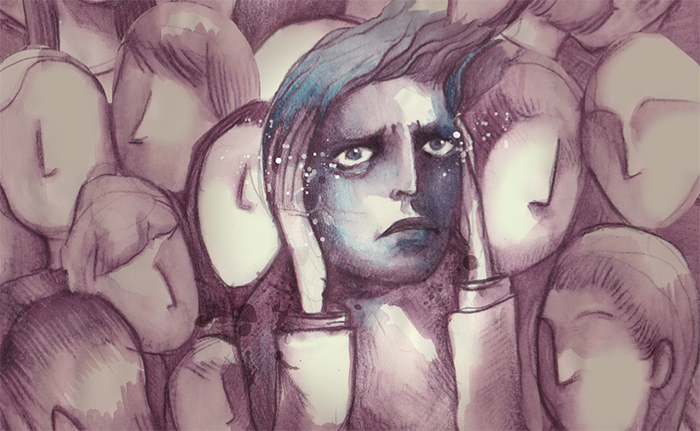Transcranial direct current stimulation shows promise for depression therapy

LAWRENCE — Small amounts of electricity similar to the output of a common 9-volt battery could improve life for people living with major depression, the most common mood disorder.
 A new study at the University of Kansas will investigate the potential of transcranial direct current stimulation, or tDCS, whereby a safe, low current of electricity is applied to the brain by placing electrodes on a person’s scalp. The painless technique may be a useful as a therapy for depression, especially in conjunction with antidepressant medications.
A new study at the University of Kansas will investigate the potential of transcranial direct current stimulation, or tDCS, whereby a safe, low current of electricity is applied to the brain by placing electrodes on a person’s scalp. The painless technique may be a useful as a therapy for depression, especially in conjunction with antidepressant medications.
“It’s a technology that allows us to influence the chance that cells in the brain will fire using moderate amounts of electricity,” said Evangelia Chrysikou, assistant professor of psychology.
Chrysikou recently earned a $70,000 grant from the Brain and Behavior Research Foundation to study the potential of tDCS in people experiencing depression. She’ll use proton magnetic resonance spectroscopy and functional magnetic resonance imaging to measure changes in brain chemistry and neural activity among 40 subjects receiving tDCS, half healthy and half experiencing major depressive disorder. Participants will be recruited from the KU Psychological Clinic on KU’s Lawrence campus and the Department of Psychiatry at the University of Kansas Medical Center.
Chrysikou said that a number of smaller pilot studies have shown the promise of tDCS for patients experiencing major depression, but her research will push forward knowledge of how the treatment can be most effective.
“It’s a promising technique,” she said. “We want to increase understanding of how it works at the brain level. What’s the mechanism that underlies these positive changes? If we understand the mechanism, we could boost the effects of medication with this intervention. For example, if some patients don’t respond to antidepressants, we can combine them with non-invasive brain stimulation and potentially increase the likelihood that the drugs will work as intended.”
According to Chrysikou, the study will offer a comprehensive examination of the effects of the technique at the level of brain chemistry and function.
“We’re going to take participants in a healthy control group and patients diagnosed with depression, and we’re going to apply the intervention while they’re being scanned at the Hoglund Brain Imaging Center in Kansas City,” she said. “We’ll take pictures of how the brain changes before and after the intervention and when participants are trying to regulate their emotions during behavioral tasks.”
Research participants will look at positive, negative and neutral images while their brain activity is measured prior to and concurrently with or following tDCS.
“The images come from very well-standardized database of images that are normalized and have been used in thousands of studies,” Chrysikou said. “We present participants with positive, negative and neutral pictures, and we ask them to regulate their experience of each emotion. For example, negative images might be a picture of a funeral or a sad baby, and on the other side positive pictures could be of people being happy on the beach. We use positive and negative pictures because it has been shown that patients with depression have dampened emotional responses to stimuli regardless of emotional valence. We want to examine potential differences in emotion regulation before and during the intervention across these stimuli.”
The KU researcher said tDCS is very different from the electroconvulsive therapy available to certain patients with major depressive disorder today, who do not respond to any other intervention. For instance, tDCS doesn’t require anesthesia and involves substantially smaller amounts of electricity. In fact, Chrysikou said that tDCS is already self-administered at home for therapeutic purposes in other countries.
“This is different in the sense that the amount of electricity applied in surface of brain is extremely small,” she said. “Seizures induced following tDCS have never been reported in the literature. One of the benefits of the approach is that it doesn’t need to be applied exclusively in a medical setting. As long as people have met the inclusion criteria, such as no brain trauma or metal implants, it’s a safe approach.”
Chrysikou added that tDCS could even be controlled remotely, for people in remote or rural areas without access to nearby psychiatric facilities, thus increasing the broader effects of the intervention.